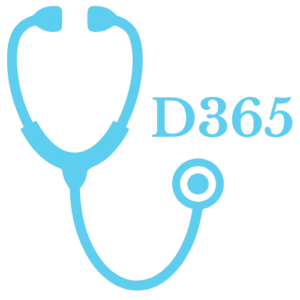Methods
aka Treatments
Treatment plans vary — some require daily doses, others work best as a single injection. Choose the right therapy to keep your Dynamics 365 rollout on track.

List of Methods
Microsoft Learn
aka Over-the-Counter Therapy
Free and flexible online learning
Microsoft Learn offers self-paced learning paths that act like over-the-counter remedies—widely available and useful for general education.
Pros:
- Free and accessible to anyone
- Tracks individual progress
- Covers a broad range of D365 apps
Limitations:
- Focuses heavily on configuration, not end-user tasks
- Primarily text-based—limited videos or interactivity
- No visibility for managers into team progress
- Can be difficult to navigate and determine which learning paths apply to specific roles or job functions
Prescription: A good first step, best for independent learners and certification prep.
Subscription-Based Online Training
aka Self-Directed Rehab
Scalable, role-based training platforms
Platforms like Item by Item deliver structured, role-specific training that functions like a personalized treatment plan. It’s designed for long-term learning health—complete with diagnostics, guided routines, and progress tracking.
Pros:
- Built for end-users—teaching them how to do their jobs within D365
- Includes videos, walkthroughs, and assessments
- Allows managers to monitor team progress and assign training
- Scales easily across departments and new hires
- Supports uploading custom materials to enhance or localize training content
- Clear role-based learning paths eliminate guesswork about who should complete what
Prescription: Ideal as a foundational regimen—especially for organizations seeking structured, repeatable training with managerial oversight.
Consultant-Led Training
aka Specialist Care
Personalized, in-person, or virtual instruction
Hiring a D365 consultant or training partner offers a white-glove approach — like bringing in a specialist for a targeted intervention. These sessions are tailored to your environment, users, and business processes.
Pros:
- Fully customized to your organization
- High-impact for go-lives, upgrades, or onboarding large teams
- Interactive and allows for Q&A
Considerations:
- Higher cost compared to other methods
- Often involves creating all training materials from scratch
- Materials are typically delivered as static documents, which are hard to update or reuse
- Difficult to scale or replicate without repeated investment
Prescription: Best used for pre-go-live readiness or change management scenarios requiring hands-on attention.
Hybrid Approach
aka Multimodal Therapy
Combine multiple methods for maximum impact
The most effective training regimen often blends approaches—like a well-rounded treatment plan. Use a subscription-based platform for baseline education, Microsoft Learn for those pursuing certification, and consultant-led or internal training before go-live to reinforce key workflows.
Pros:
- Combines the strengths of each method—scalable and convenient platform for day-to-day roles, in-depth resources for certification-level learning, and expert-led sessions for high-impact moments
- Adapts to diverse learning needs—supports different roles, departments, and skill levels within the same organization
- Creates a complete learning journey—from onboarding and continuous learning to certification and go-live readiness
- Ensures appropriate support—sometimes online, sometimes in person—is available during critical phases like testing, user acceptance, and go-live
- Internal team members can also deliver training—allowing them to grow into internal experts as the implementation progresses
Prescription: A holistic, preventative approach—ideal for ensuring continuity, adoption, and user confidence from kickoff through go-live.
Comparison of Methods
aka Preventive Care Protocol
Feature / Criteria | Microsoft Learn | Subscription-Based | Consultant-Led | Hybrid Approach |
Cost | Free | Paid subscription | High, one-time or hourly fees | Mixed (some free, some paid) |
Content Format | Primarily articles and step-by-step docs | Video lessons, walkthroughs, assessments | Usually slide decks, handouts, live sessions | Combination of all formats |
End-User Focus | Limited—mainly configuration-based | Strong—teaches users how to do their jobs | Varies—can be customized for users | Strong—baseline platform plus tailored additions |
Manager Oversight | Not available | Full tracking and assignment features | Manual follow-up required | Available via platform; enhanced by team coordination |
Customizability | Low | High—can upload internal materials | High—but usually built from scratch | Very High—blend of internal and external inputs |
Scalability | Good for individuals | Excellent for teams and departments | Low—requires repeat engagements | Excellent—platform + reusable internal efforts |
Certification Support | Yes—but hard to align with roles | Yes—optional, structured support | Not usually focused on certification | Yes—Microsoft Learn used for cert prep |
Best Use Case | Individual learning and certification prep | Ongoing training across departments | Pre-go-live or onboarding workshops | Full project lifecycle training |
Support Delivery | Self-guided | Online and asynchronous | Live, virtual or on-site | Both—online and in-person, with internal or external facilitators |





